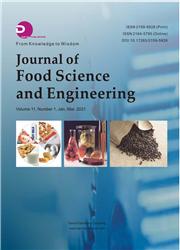An Endemic Plant of Ermenek Region (Turkey), Muscari muscarmi: Economic Importance, and Is There a Useful Way Out Cultivation in Its Natural Habitats?
引用次数: 1
Abstract
Turkey is one of the most floristically rich countries in the world with endemic plants. Approximately one third of its flora is endemic. The Muscari muscarimi which belongs to the Liliaceae family is one of its most prominent endemic geophyte plants which originates in southwestern of Turkey where it is found in rocky places like Ermenek, Başyayla (Büyükkarapınar village), Sarıveliler. This species is the most sweetly scented member of the Liliaceae family, having something of the musk scent. Also, this plant locally is used in traditional medicine as antirheumatic, stomachic, diuretic and expectorant. In addition to this, it has also been used as food for humans and animals, ornamental plants in gardens. Morphologically, it has 3-6 linear-lanceolate, grayish-green leaves per plant and bulbs of 2-4 cm in diameter with thick fleshy perennial roots which delve down into the rocky ground of their natural habitats. The chemical is composed of polysaccharides, homoisoflavanons, glycosides etc. Main components of M. muscarimi were identified as (E)-β-ocimene (t-36%), methyl salicylate (1-21%), E-methyl isoeugenol (4-22%) and benzyl benzoate (7-56%). The picking up of the plant bulbs from their natural habitats is prohibited, in accordance with international agreements for the protection of endangered geophytes. The overly habitat destruction in native growing area threatened the existence of the species categories. It is known that in vitro bulblet production in Muscari muscarimi is low. This is difficult for its cultivation in native Ermenek area districts. Recent works show that the culturing immature Musari muscarimi embryos on different growth media could be considered as a useful method for in vitro propagation. As a result, the geophytes, such as M. muscarimi, are eligible widely for perfume production and in the pharmaceutical industry as well as for ornamental flowers. Because of this plant economic importance, bulbs growing and cultivation in their natural habitats could be discussed in this study.土耳其埃尔梅内克地区特有植物麝香树:经济重要性及在其自然生境中是否有出路?
土耳其是世界上植物区系最丰富的国家之一,拥有特有的植物。大约三分之一的植物群是当地特有的。Muscari muscarimi属于百合科,是土耳其最著名的地生植物之一,起源于土耳其西南部,在Ermenek, ba yayla (Büyükkarapınar village), Sarıveliler等多岩石的地方发现。这个物种是百合科中气味最甜的成员,有一些麝香的气味。此外,这种植物在当地的传统医学中用作抗风湿,胃,利尿和祛痰。除此之外,它还被用作人类和动物的食物,花园中的观赏植物。从形态上看,它每株有3-6片线状披针形、灰绿色的叶子,鳞茎直径2-4厘米,有厚实的肉质多年生根,深入到自然栖息地的岩石地面。该化学物质由多糖、同型异黄酮、糖苷等组成。主要成分为(E)-β-辛烯(t-36%)、水杨酸甲酯(1-21%)、E-甲基异丁香酚(4-22%)和苯甲酸苄酯(7-56%)。根据保护濒危地球植物的国际协定,禁止从其自然栖息地采摘植物球茎。原生生长区生境的过度破坏威胁着物种分类的生存。众所周知,Muscari muscarimi的体外小球粒产量很低。这对其在埃尔梅内克地区的种植来说是困难的。最近的研究表明,在不同的培养基上培养未成熟的Musari muscarimi胚胎可以被认为是一种有效的体外繁殖方法。因此,地生植物,如麝香草,广泛适用于香水生产和制药工业以及观赏花卉。由于这种植物具有重要的经济价值,本研究可以对其自然生境的鳞茎生长和栽培进行探讨。
本文章由计算机程序翻译,如有差异,请以英文原文为准。
求助全文
约1分钟内获得全文
求助全文

 求助内容:
求助内容: 应助结果提醒方式:
应助结果提醒方式:


